What is most striking about this Spanish team, compared to its previous editions and the 23 other teams competing with it at the 2024 European Championship, is not really the level of technical skill.
The Spanish are impressive in that sense, but it’s really a question of courage, audacity and willingness to take risks.
International football tends to be cautious and circumspect. The matches between France and England this summer are a perfect example of the conservative nature of these tournaments, but Spain have bucked that trend.
Their 2-1 semi-final victory over France last night (Tuesday) will live long in the memory, not least thanks to Lamine Yamal’s stunning equaliser, which made him the youngest goalscorer in the competition’s history at 16 years and 362 days.
After 30 minutes of play, the match seemed destined to become a true all-time classic. Ultimately, it did not reach those heights and the match was won and lost in the first half.
Want Phil Hay to analyse and explain the biggest stories from Euro 2024 and the Copa America? Sign up (for free) to The Athletic FC newsletter here
Spain’s approach, whether by accident or choice, was to concentrate heavily on its left flank.
It’s hard to understand why this has been the case: Jules Koundé has been solid at right-back, N’Golo Kante fills all the gaps on that side and right winger Ousmane Dembélé is further back than Kylian Mbappé on the opposite side of the pitch. But the statistics match what seemed clear from watching the game: Spain wanted to attack on the left, France on the right.
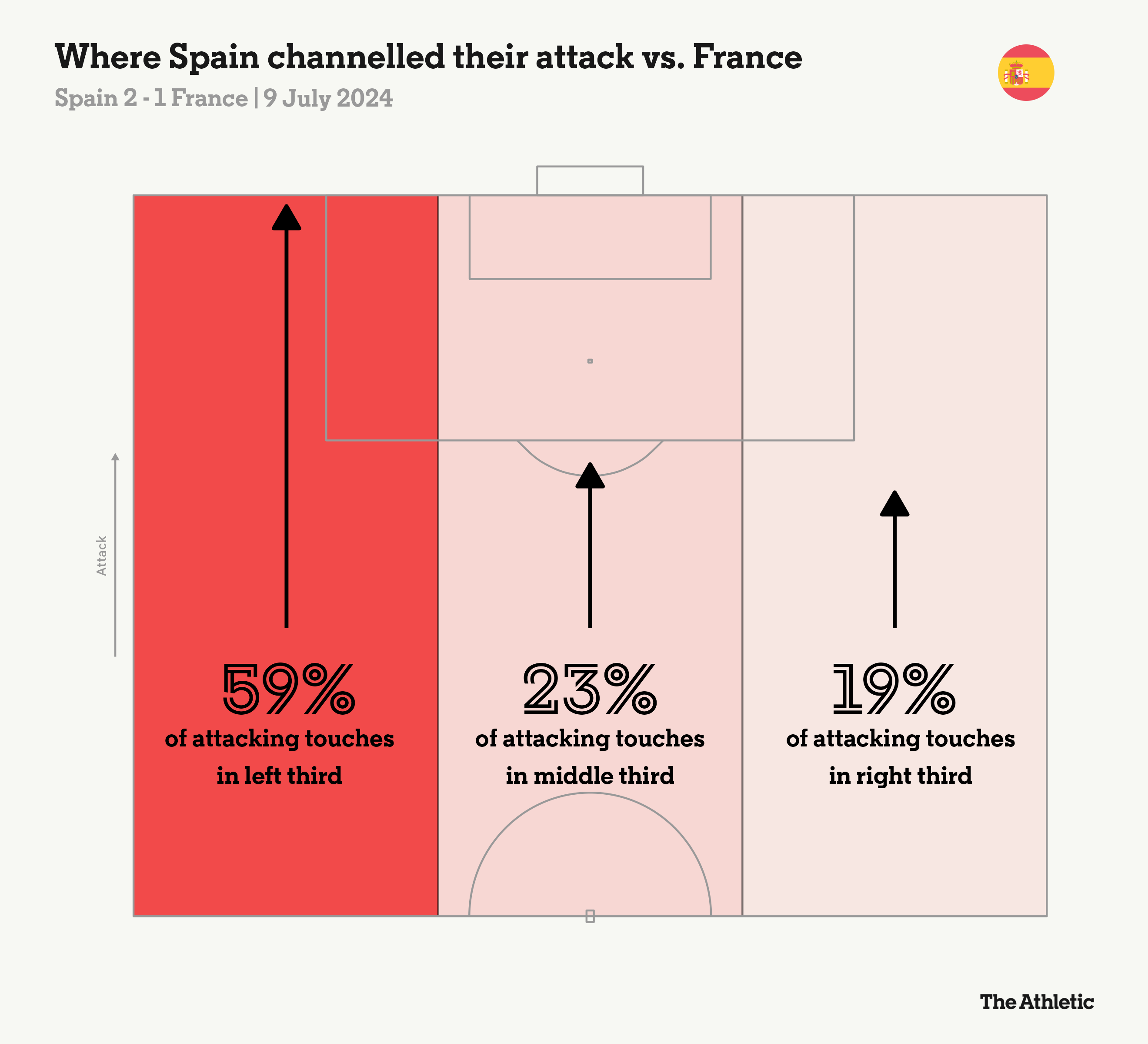
Their main approach was to move the ball forward through Aymeric Laporte from his left centre-back role.

GO FURTHER
Interview with Aymeric Laporte: “I am not surprised that we were ignored at the beginning”
In general, Spain’s midfield trio leaned heavily towards that side. Dani Olmo played more often as a number 10 than a right number 8. Fabian Ruiz was more of a left number 8, constantly making forward runs into the box. Even Rodri seemed to play more to the left. All of this created a lot of space in the corridor usually occupied by Mbappe, which seemed like a major risk. But that’s how Spain play.
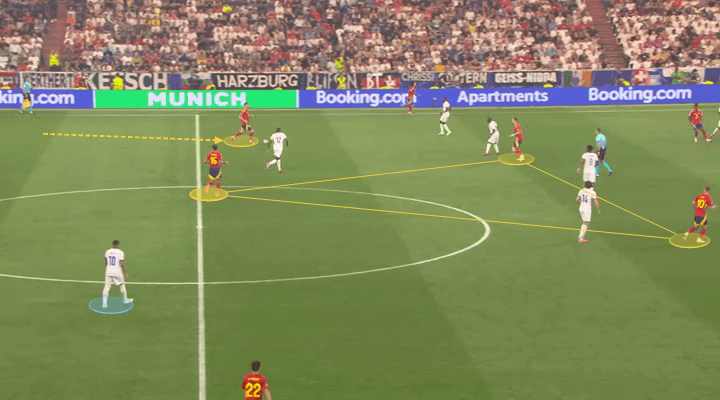
Sometimes Spain made incursions on this left side.
Here’s a good example of why teams play with wingers close to the touchline: they stretch the opposition’s defence and leave space for their teammates to exploit. Here, with left winger Nico Williams on the ball, the distance between full-back Kounde and centre-back Dayot Upamecano is enormous. Ruiz drives into this space, gets ahead of Kanté and puts himself in a good position to cross. However, there is no one at the far post to finish off his deep cross.
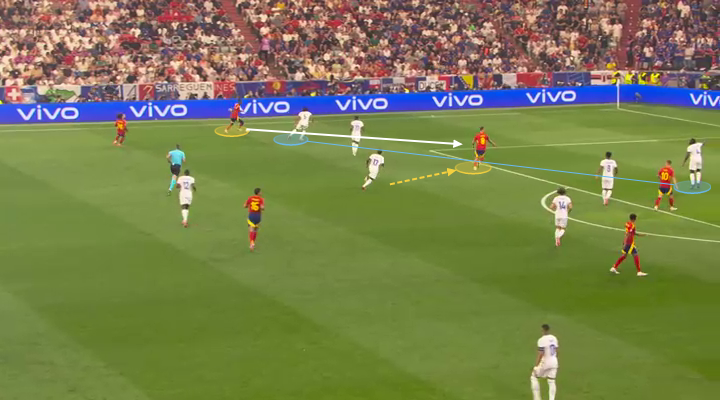
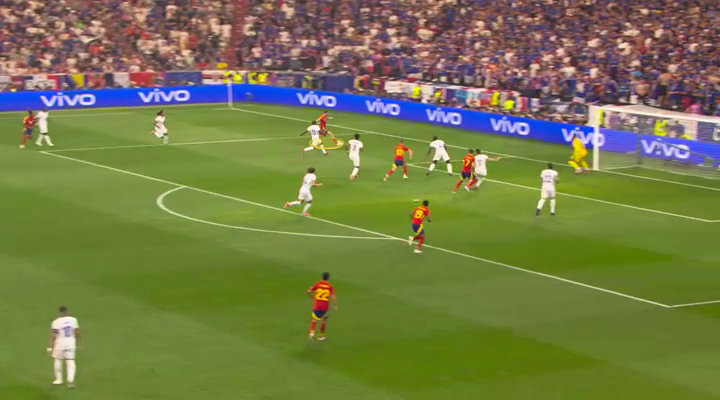
But the pattern continued: Laporte bringing the ball forward, the Spanish midfielders positioned to the left and a large space on the near side, Spain’s right, where Mbappe was positioned.
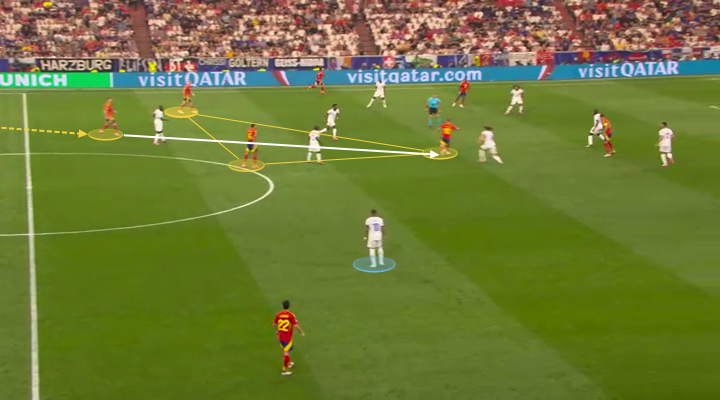
Here is another example.
In this situation, you can’t even really think of Spain’s midfield as a triangle: they’re almost vertically aligned, all inside-left, which is highly unusual. Again, if there’s a turnover of possession here, the ball to Mbappe is incredibly simple for France.
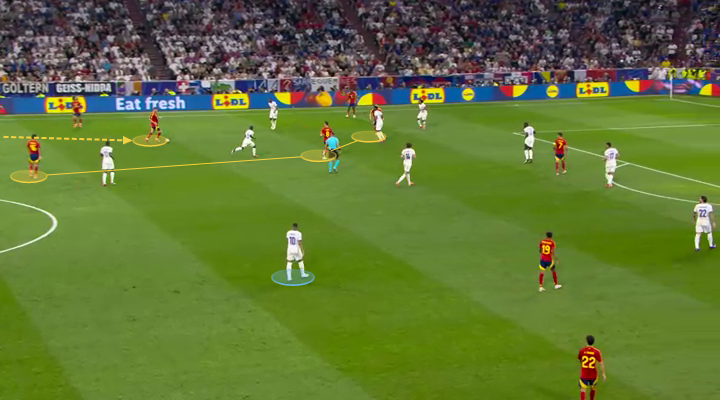
To make matters worse, Spain also showed great audacity down their right side, with full-back Jesus Navas constantly getting past Yamal. Here is an example of Navas advancing forward along the touchline, with Mbappe running back and asking left-back Theo Hernandez to push sideways and follow Navas, while Mbappe himself takes on Yamal.
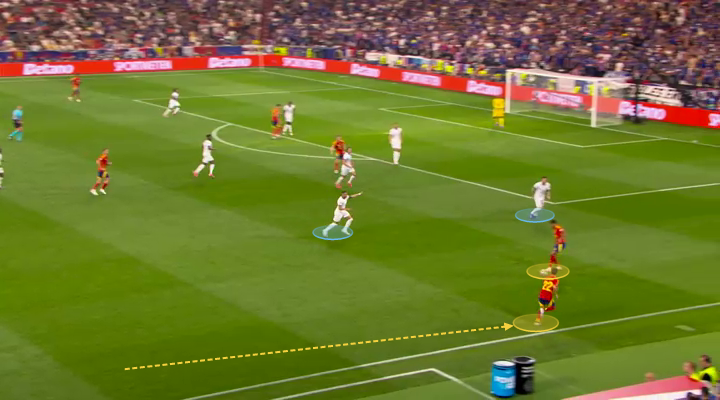
But Mbappé’s defensive work is still sporadic. Here, Navas’s overflows are not controlled, with Mbappé moving back. Yamal can then cut inside.
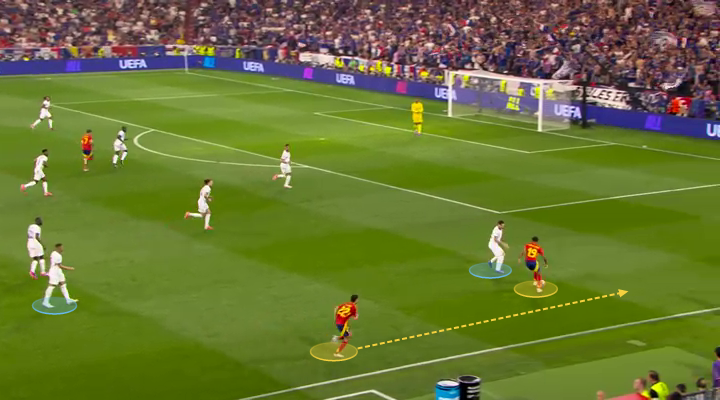
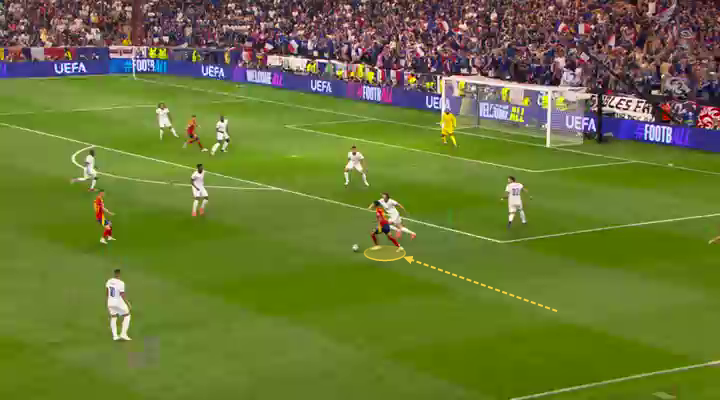
But Spain left the near side empty and gave Mbappe space. Here’s a warning sign: France counterattacked through the middle and Mbappe made a diagonal run from the left flank. Could Navas, 38, who made his first-team debut for Sevilla when the Frenchman was four, match his speed?
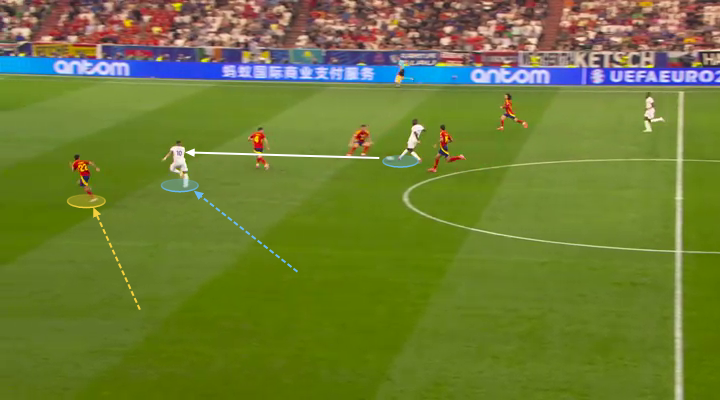
Well, maybe not quite. But a bad pass went in favour of the Spanish right-back, who cleared.
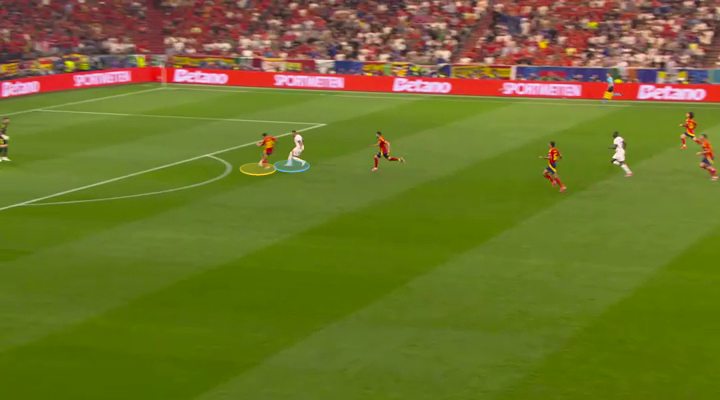
Leaving such large spaces on the near side, around Mbappé, was inevitably a huge risk.
It is unclear exactly how this situation came about, as the TV footage showed a replay of an earlier incident. But Spain are completely undermanned on the right side, with their midfield entirely oriented to the left. Navas (highlighted by the yellow dot) has to close down Adrien Rabiot in a central position knowing that Mbappe is free behind him. In his panic, he slips.
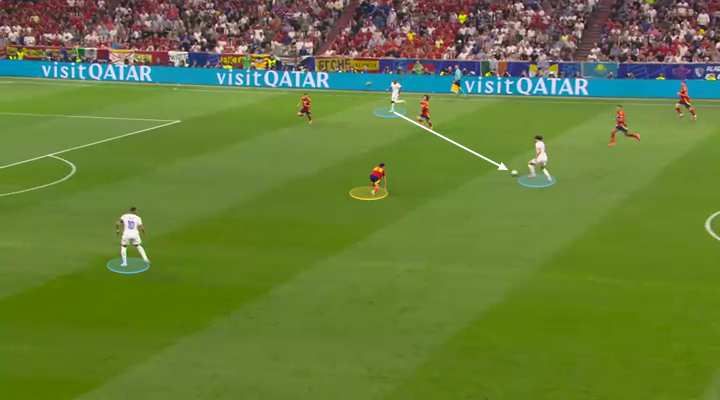
And, in the end, he chose the best option: to hit Rabiot before the midfielder could pass the ball to an unguarded Mbappé.
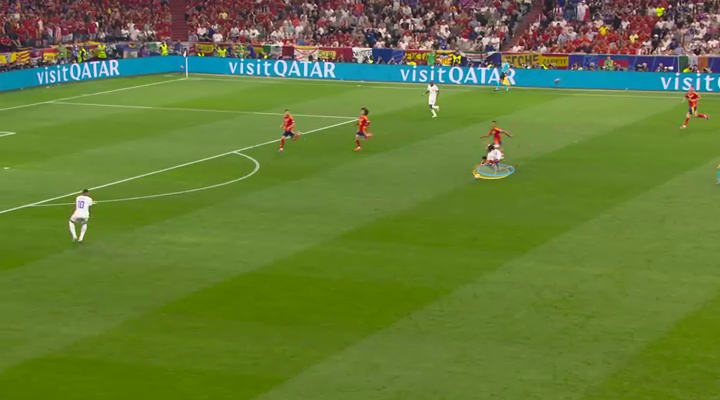
Tactical fouls have marred the knockout stages of this tournament, with too many promising attacks being stopped by cynical tackles. It must be said that this foul was an excellent one, even if it meant Navas had to face Mbappe for the rest of the game under a yellow card. And Navas was only the Spanish right-back’s replacement, with Dani Carvajal suspended.
That right-back area looked like it would be a huge problem for Spain in the opening minutes.
Here is France’s goal, in the eighth minute.
Even before Dembélé made this pass, Navas already seemed disconnected from the rest of the team: the central defenders were unable to help him and Yamal (n°19) did not seem alert either.
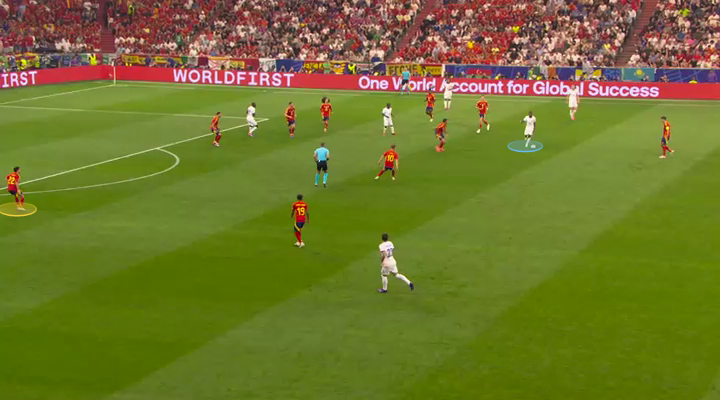
As Mbappé receives the ball, Navas is isolated. He falls back, not wanting to commit.
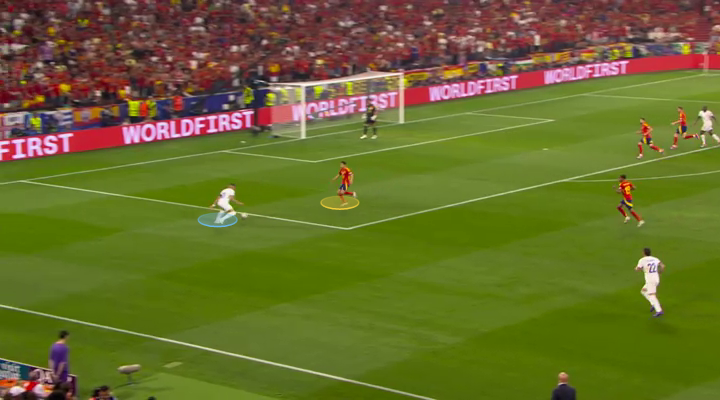
Mbappé accepts this invitation to cross, placing the ball perfectly on the head of Randal Kolo Muani.
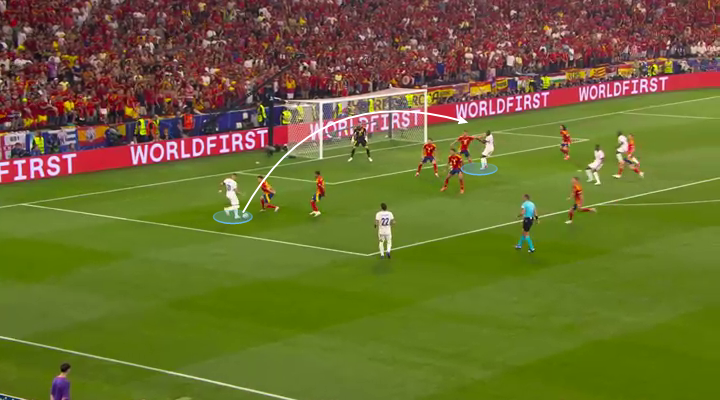
In a parallel universe, France won this match because Spain gave Mbappé too much space.
Here is another example where the entire Spanish midfield is oriented to the left. This time, Hernandez has the space to move the ball forward and pass it to Mbappe.
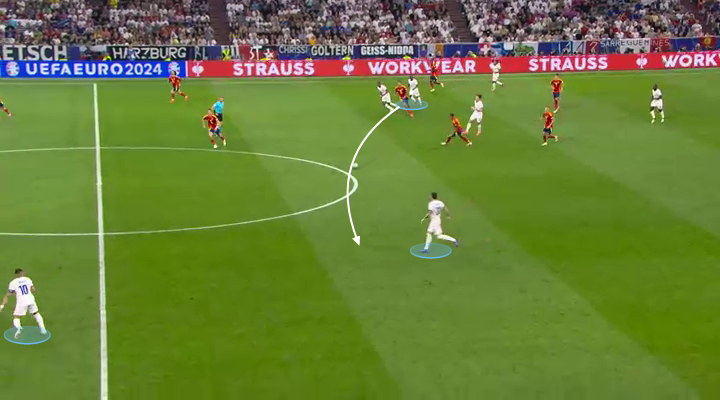
It’s not a good situation for Spain. This time Mbappé cut into the goal and tried a great opportunity.
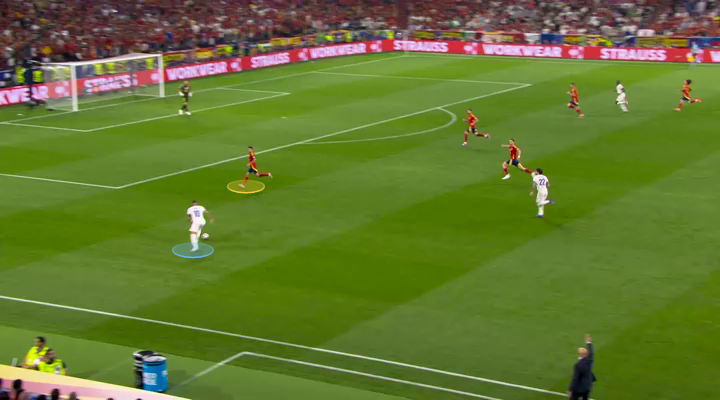
The most surprising aspect of all this was how often Navas continued to push forward instead of becoming more cautious and staying on Mbappe’s side of goal.
Here’s a situation that shows the risk of him being caught in front of the ball – central defender Nacho was taken off to face Mbappe…
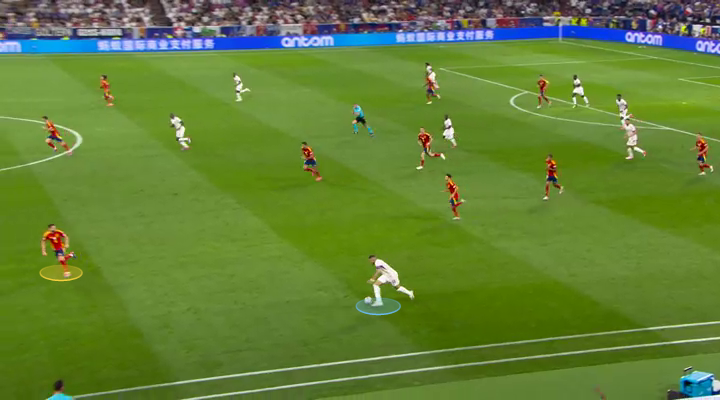
…and did a great job of containing him, moving away and preventing Mbappe from getting past him. Rodri eventually provided support, but it was mostly a question of Nacho’s defensive intelligence.
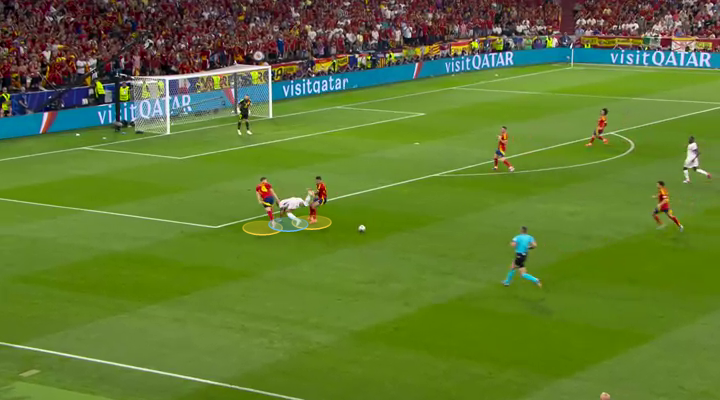
But Navas continued to explode past Mbappe, as was the case in the build-up to Yamal’s superb goal in the 21st minute.
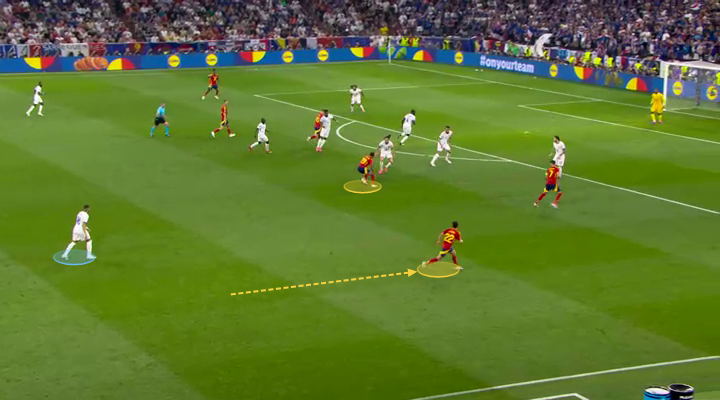
Can there be a tactical reason for this goal? Not really. Nevertheless, it is entertaining to watch Navas play. As Yamal prepares to shoot, the veteran turns and starts running back into position, knowing that he absolutely must get alongside Mbappé before a counterattack can form. He obviously did not expect Yamal’s shot to fly into the net.
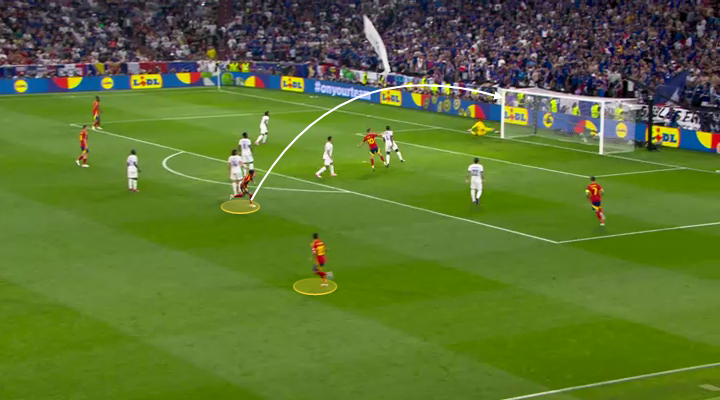
But Navas’ audacity made it possible to score the winner four minutes later when the keeper pushed forward again but Mbappe chose not to follow his run. His cross into the danger zone was pushed away…
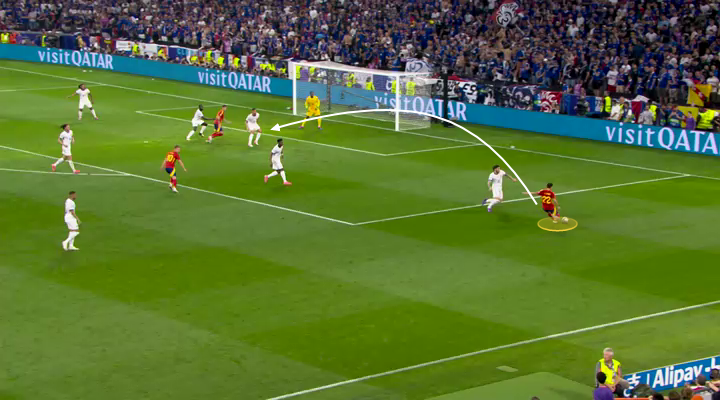
…but only until Olmo, who showed wonderful composure to bring the ball back and put it on his own path…
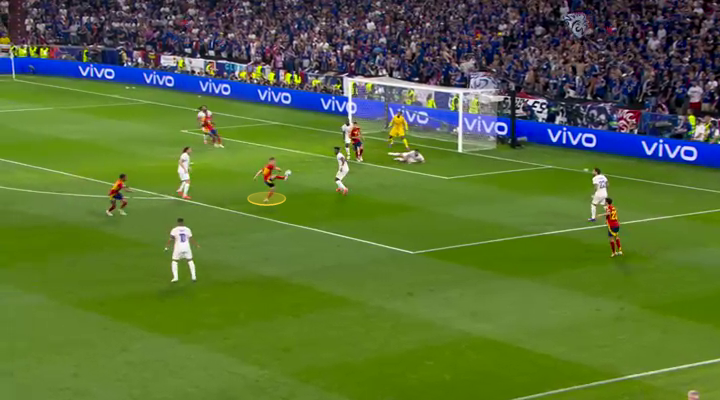
…and then scores, thanks to a significant deflection on Koundé.
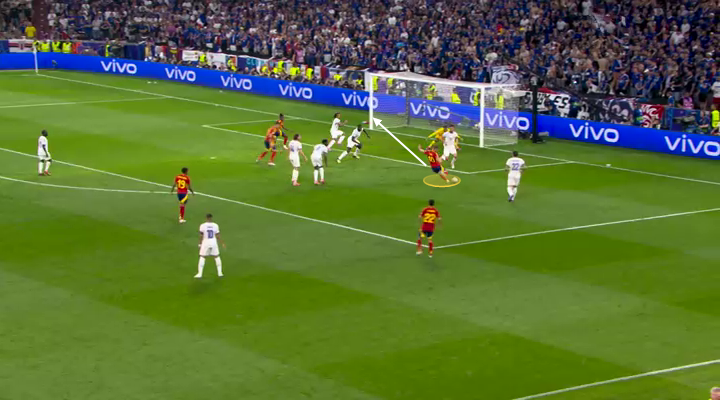
Spain were now leading for the first time. Would they change their game plan? Not really, at least not before half-time.
Here, with Yamal moving inside to pass to Olmo, Navas is again on the overlap.
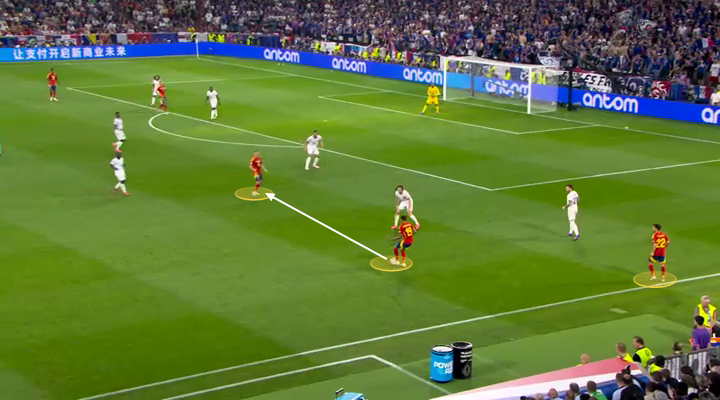
Of course, things changed after the break.
Having shown little sign of the tiki-taka style that won them three major titles from 2008 to 2012, Spain were considerably more conservative in possession in the second half, dominating possession.
Navas went off injured just before the hour mark, and Nacho replaced Nacho in central defence to become a right-back. But Spain continued to push and left-back Marc Cucurella made appearances in the final third of the pitch more often than most would have expected.
The only concern was the substitutions made by Spain coach Luis de la Fuente. He brought on Olmo and Alvaro Morata to strengthen the midfield and, as against Germany in the previous round, it felt like Spain had retreated too early and no longer offered any attacking threat.
But that’s a minor criticism.
Otherwise, Spain have been a pleasure to watch throughout this tournament and will go into Sunday’s final as heavy favourites, regardless of who their opponents are.